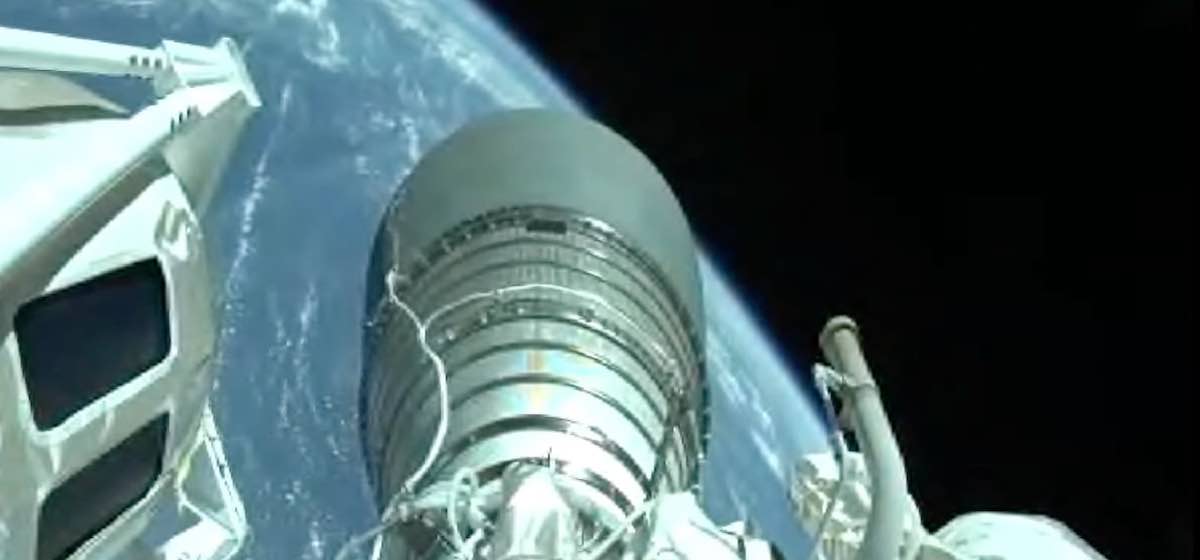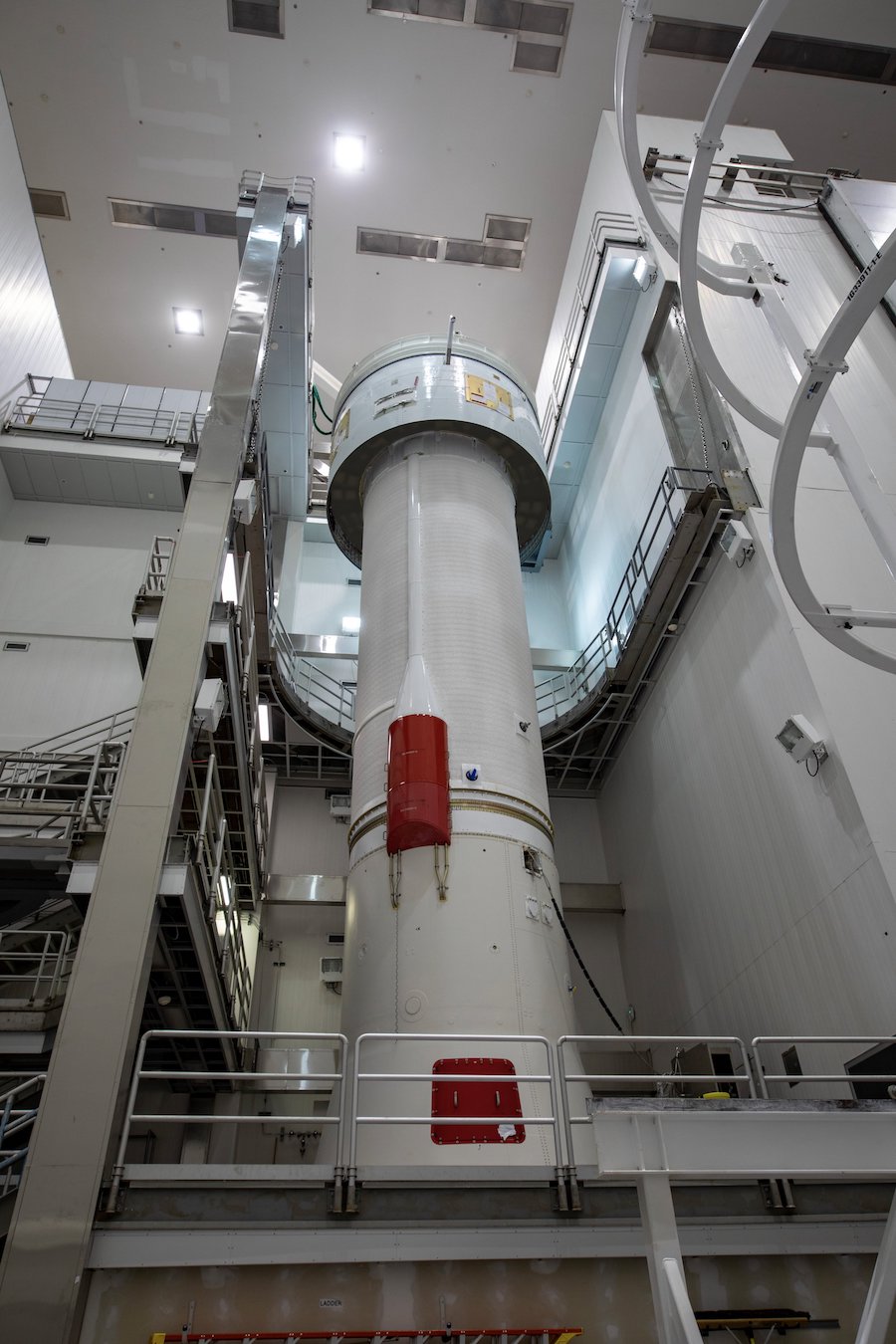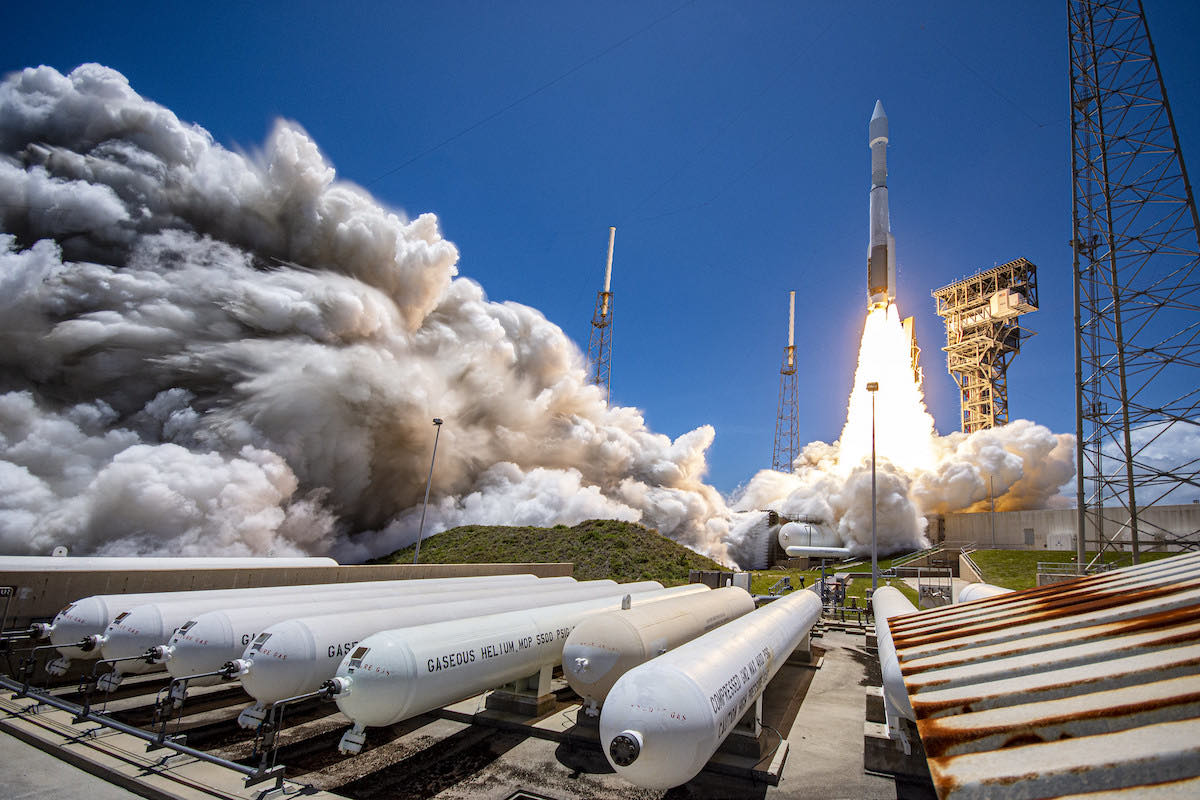
United Launch Alliance’s next Atlas 5 launch will carry Boeing’s Starliner crew capsule into orbit July 30 on its second unpiloted test fight, officials confirmed Thursday. An Atlas 5 rocket for the U.S. military previously scheduled for June 23 has been postponed as engineers analyze unexpected vibrations of a new upper stage engine nozzle on a mission last month.
The Atlas 5 rocket slated to launch the Starliner test flight uses two-engine Centaur upper stage using a different version of the Aerojet Rocketdyne RL10 engine. A new RL10 engine variant debuted on the most recent Atlas 5 launch May 18.
The Centaur upper stage’s single upgraded RL10C-1-1 engine completed two successful firings on the May 18 mission to deploy the U.S. Space Force’s SBIRS GEO 5 missile warning satellite into orbit.
But engineers are taking extra time to analyze unexpected vibrations of the RL10C-1-1 engine’s new nozzle extension during last month’s launch, according to Tory Bruno, ULA’s president and CEO. On-board video from the launch showed the nozzle vibrating, or “ringing,” soon it ignited about five minutes after liftoff.
“Those watching the live feed may have observed some ringing of RL10s’s new carbon nozzle extension,” Bruno tweeted. “While it did its job, boosting RL10’s eye watering performance even a bit higher, we want to make sure we fully understand that behavior before flying this configuration again.”
The upgraded RL10C-1-1 engine comes with a performance improvement and is easier to build, according to ULA.

The RL10C-1-1 engine has a larger nozzle than the engines flown on previous Atlas 5 rockets, and introduces a new 3D-printed injector, which is flying on its first operational mission, said Gary Wentz, vice president of government and commercial programs at ULA, during a press briefing before the SBIRS GEO 5 launch last month.
According to Aerojet Rocketdyne’s website, the RL10C-1-1 engine produces about 1,000 pounds of additional thrust over the RL10C-1 engine version used on previous Atlas 5 rockets.
More than 500 RL10 engines have flown on rockets since the 1960s. ULA’s Vulcan Centaur rocket will also use the RL10C-1-1 engine variant, as will all future Atlas 5s except missions with Boeing’s Starliner crew capsule, which uses a unique dual-engine Centaur upper stage.
The twin-engine Centaur is powered by RL10A-4-2 engines, an older variant of the RL10 without the carbon nozzle extension.
The U.S. military’s Space Test Program-3, or STP-3, mission was next on ULA’s launch schedule. The STP-3 mission was scheduled for launch June 23 with multiple military spacecraft heading into a geosynchronous orbit more than 22,000 miles (nearly 36,000 kilometers) over the equator.
One of the satellites on the STP-3 mission, named STPSat 6, hosts several payloads and experiments, including the National Nuclear Security Administration’s Space and Atmospheric Burst Reporting System-3 payload, which is designed to detect nuclear detonations from orbit. NASA’s Laser Communications Relay Demonstration experiment and several more payloads are also flying on the STPSat 6 spacecraft.
A smaller satellite named LPDE 1 will ride into orbit with STPSat 6. The LPDE 1 spacecraft is designed to accommodate experimental payloads and small satellites, which could be deployed from the parent satellite in orbit.
The STP-3 mission will launch on an Atlas 5 rocket flying in the “551” configuration with five strap-on boosters, a 5.4-meter (17.7-foot) diameter payload fairing, and a single RL10C-1-1 engine on the Centaur upper stage.

ULA last week announced the delay in the STP-3 mission to analyze the engine nozzle vibrations. The company, a 50-50 joint venture between Boeing and Lockheed Martin, confirmed Thursday that the Starliner test flight, using the older RL10 engine variant, will launch ahead of the STP-3 mission.
The Starliner’s second unpiloted test flight is a redo of a demonstration mission in December 2019 that failed to reach the International Space Station. Boeing and NASA officials blamed the botched test flight on software issues, and the reusable capsule safely landed in New Mexico after mission control aborted the mission to the space station.
Developed with more than $5 billion in NASA funding, Boeing’s Starliner spacecraft is designed to ferry astronauts to and from the space station. NASA has a contract with Boeing for at least six Starliner crew rotation flights to the space station, giving the agency a second U.S. vehicle for astronaut missions to low Earth orbit, following the start of operational service with SpaceX’s Crew Dragon capsule last year.
The Starliner mission set for launch July 30, known as Orbital Flight Test-2, is a prerequisite to the Boeing crew capsule’s first test flight with astronauts. The OFT-2 mission is expected to last between four and eight days, according to Joel Montalbano, NASA’s program manager for the International Space Station.
Three astronauts will dock with the space station on the Starliner’s Crew Flight Test.
After the Crew Flight Test, NASA will certify the Starliner to fly on operational crew rotation missions to the space station. Those flights will carry four astronauts and last up to seven months.
Email the author.
Follow Stephen Clark on Twitter: @StephenClark1.
